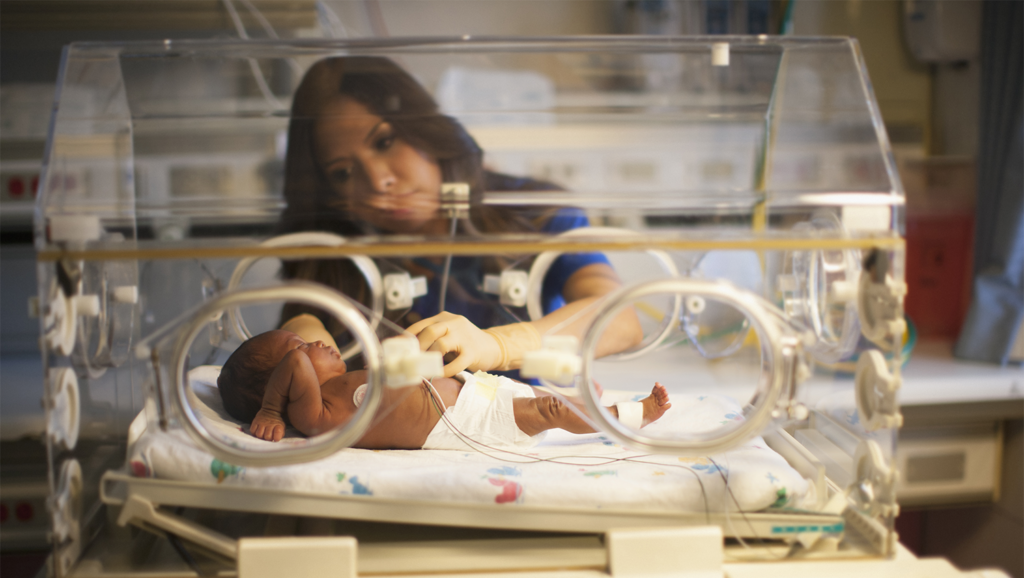
A thorough clinical examination of a newborn involves a systematic approach to assess the overall health and identify any abnormalities. Below is a detailed and elaborate guide for the comprehensive clinical examination of a newborn:
1. General Observation
Initial Inspection:
- General Appearance: Observe the overall appearance, including color, posture, and activity.
- Level of Consciousness: Assess the newborn’s alertness, response to stimuli, and level of arousal.
- Skin Color: Check for pallor, jaundice, cyanosis, or any other discoloration.
- Nutritional Status: Evaluate muscle bulk, subcutaneous fat, and signs of dehydration or malnutrition.
- Movement and Tone: Observe spontaneous movements, muscle tone, and symmetry of movements.
2. Vital Signs
Temperature:
- Method: Measure the axillary temperature.
- Normal Range: 36.5°C to 37.5°C (97.7°F to 99.5°F).
Heart Rate:
- Method: Auscultate for a full minute using a stethoscope.
- Normal Range: 120-160 beats per minute.
Respiratory Rate:
- Method: Observe the chest and abdomen for a full minute.
- Normal Range: 30-60 breaths per minute.
Blood Pressure:
- Method: Use an appropriate-sized cuff and measure on the right arm.
- Normal Range: Varies with gestational age and weight.
Oxygen Saturation:
- Method: Use a pulse oximeter on the right hand or foot.
- Normal Range: >95%.
3. Anthropometric Measurements
Weight:
- Method: Use a calibrated infant scale.
- Normal Range: Typically 2.5-4.0 kg for a full-term newborn.
Length:
- Method: Measure from the crown to the heel using a measuring board or tape.
- Normal Range: Approximately 45-55 cm for a full-term newborn.
Head Circumference:
- Method: Measure around the occipital prominence and supraorbital ridges.
- Normal Range: 32-38 cm for a full-term newborn.
4. Head and Neck Examination
Head:
- Shape and Size: Check for molding, caput succedaneum, and cephalhematoma.
- Fontanelles: Assess the anterior and posterior fontanelles for size, tension, and bulging or depression.
- Sutures: Palpate the cranial sutures for separation or overlapping.
Eyes:
- Position and Symmetry: Inspect for proper alignment and spacing.
- Pupillary Reflex: Check for equal and reactive pupils.
- Red Reflex: Assess using an ophthalmoscope to rule out cataracts and retinoblastoma.
- Discharge: Look for any signs of conjunctivitis or dacryocystitis.
Ears:
- Position and Shape: Inspect for proper placement and any abnormalities.
- Patency: Check the ear canals for patency and presence of vernix or discharge.
- Hearing: Assess response to sound or perform newborn hearing screening.
Nose:
- Patency: Assess for choanal atresia using a feeding tube or observing airflow through each nostril.
- Shape and Discharge: Inspect for any deformities or nasal discharge.
Mouth:
- Lips and Palate: Check for cleft lip and palate, Epstein pearls, and ankyloglossia.
- Tongue: Observe for size, movement, and any signs of macroglossia.
- Mucosa: Inspect for signs of thrush or other lesions.
5. Chest Examination
Inspection:
- Shape and Symmetry: Observe the chest for any deformities or asymmetry.
- Respiratory Movements: Note the pattern, depth, and effort of breathing.
Palpation:
- Chest Wall: Assess for tenderness, masses, or abnormal movements.
- Clavicles: Palpate for fractures, especially in cases of shoulder dystocia.
Auscultation:
- Breath Sounds: Listen to both lung fields for equal and clear breath sounds.
- Heart Sounds: Check for regularity, murmurs, and additional heart sounds.
6. Abdominal Examination
Inspection:
- Shape and Contour: Observe for distension, scaphoid abdomen, or visible veins.
- Umbilical Stump: Inspect for signs of infection or abnormalities.
Palpation:
- Liver and Spleen: Palpate for hepatomegaly or splenomegaly.
- Masses: Check for any palpable masses or abnormal structures.
- Tenderness: Assess for tenderness or guarding.
Auscultation:
- Bowel Sounds: Listen for the presence and quality of bowel sounds.
7. Genitalia and Anus Examination
Genitalia:
- Male: Inspect the penis for hypospadias, palpate the testes for descent, and check for hydrocele or inguinal hernia.
- Female: Inspect the labia, clitoris, and vaginal opening for any abnormalities or discharge.
Anus:
- Patency: Confirm anal patency by visual inspection or passage of meconium.
- Position: Check for normal positioning relative to the genitalia.
8. Extremities Examination
Inspection:
- Shape and Symmetry: Observe the arms and legs for any deformities or asymmetry.
- Digits: Count fingers and toes, check for syndactyly, polydactyly, and simian crease.
Palpation:
- Muscle Tone: Assess muscle tone by passive movement of limbs.
- Femoral Pulses: Palpate femoral pulses for presence and symmetry.
Reflexes:
- Primitive Reflexes: Check for Moro, grasp, rooting, and suck reflexes.
9. Back and Spine Examination
Inspection:
- Alignment: Observe the spine for scoliosis, kyphosis, or lordosis.
- Skin Markings: Look for sacral dimples, hair tufts, or birthmarks.
Palpation:
- Vertebrae: Palpate along the spine for any abnormalities or tenderness.
10. Neurological Examination
Behavior and State:
- Alertness: Assess the level of alertness and response to stimuli.
- Crying: Note the quality and pitch of the cry.
Cranial Nerves:
- Cranial Nerve II: Check for visual response.
- Cranial Nerve III, IV, VI: Observe for eye movements.
- Cranial Nerve V: Test rooting and sucking reflexes.
- Cranial Nerve VII: Assess facial symmetry and movements.
- Cranial Nerve VIII: Response to auditory stimuli.
- Cranial Nerve IX, X: Swallowing and gag reflex.
- Cranial Nerve XII: Observe tongue movements.
Motor Function:
- Movements: Assess spontaneous and reflexive movements.
- Tone: Check for hypotonia or hypertonia.
Sensory Function:
- Response to Touch: Test the response to light touch and pain.
11. Skin Examination
Color and Pigmentation:
- Jaundice: Check for jaundice, starting from the face and extending to the extremities.
- Cyanosis: Look for central and peripheral cyanosis.
- Pallor: Assess for pallor indicating anemia or poor perfusion.
Lesions and Rashes:
- Birthmarks: Identify any birthmarks such as Mongolian spots or hemangiomas.
- Rashes: Look for common neonatal rashes like erythema toxicum, milia, and pustular melanosis.
Texture and Turgor:
- Skin Turgor: Check for hydration status by assessing skin turgor.
- Texture: Note any abnormalities in skin texture such as dry or peeling skin.


